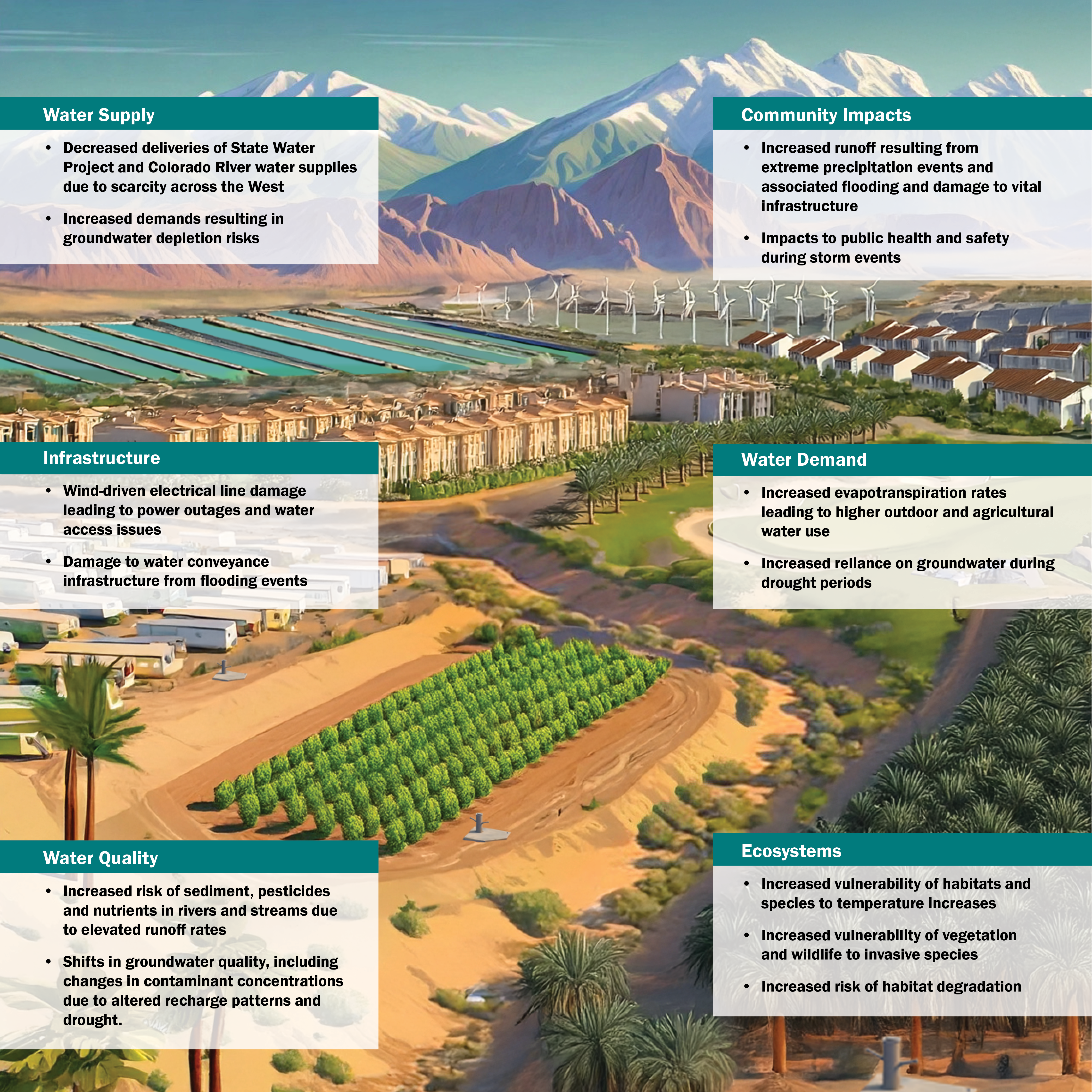
Climate Change and Water Resilience
Climate Change and Water Resilience
What is Climate Change?
Climate change is a global issue driven by human activities, particularly the burning of fossil fuels like coal, oil, and gas. These activities release greenhouse gases such as carbon dioxide and methane into the atmosphere, which absorb and re-emit heat from the Earth’s surface, leading to an increase in global temperatures. Since the 1800s, the accumulation of these gases has continuously warmed the climate, resulting in significant changes in weather patterns and frequency of extreme events.
Research and observations indicate that climate change has already intensified extreme weather events, making heat waves, droughts, atmospheric river events, and wildfires more likely, severe, and prolonged. In regions like the Coachella Valley, these changes are projected to bring longer and more intense droughts, more frequent extreme heat events, increased extreme precipitation and flooding, and heightened wildfire risks. These climate hazards pose serious threats to public health and safety, emphasizing the urgent need for effective climate adaptation and resilience strategies.
How will climate change impact the watershed, our municipal water supplies, and small water systems?
The changing climate is already causing changes in water supply availability and reliability for people, ecosystems, infrastructure, and operations in Coachella Valley. The CVRWRP will identify watershed-specific climate risks and hazards and evaluate the vulnerability of our local water systems and communities to those risks.

Drought
Prolonged droughts can reduce groundwater recharge and associated groundwater levels, straining small water systems’ ability to meet demand. As drought duration and intensity are expected to increase in the future, this will further limit water supply, increase water demand, and strain local groundwater resources and ecosystems.

Extreme precipitation and flooding
Extreme precipitation and flood events are projected to become more likely, increasing the risk of soil erosion, mudflows, and liquefaction along mountainfront areas, as well as alluvial-fan flash flooding from surrounding mountain ranges. Sudden and intense rainfall events may overwhelm infrastructure, causing flooding, contamination, and damage to small water systems.

Extreme Heat
Extreme heat events are projected to become more common, leading to more frequent regional power disruptions, increased wildfire risk, higher evapotranspiration, and degraded ecosystems. Rising temperatures will also intensify water evaporation and increase water demands, putting additional pressure on small water systems to maintain adequate supply and infrastructure.

Wildfire
Wildfires can damage infrastructure, degrade water quality through ash and debris contamination, and disrupt water supply lines for small systems. As wildfire events are expected to become more likely in the coming decades, the risk of damaged infrastructure, operational disruptions, power outages, and damaged ecosystems will increase.
What is climate resilience and adaptation planning?
The goal of climate resilience and adaptation planning is to prepare Coachella Valley’s water management, including operations, natural resources, infrastructure, and community for the effects of climate change. By assessing how climate hazards would impact water systems and the adaptive capacity of the community at large, this project will identify strategies that would help build resilience among local water systems, including implementation actions and timelines.


